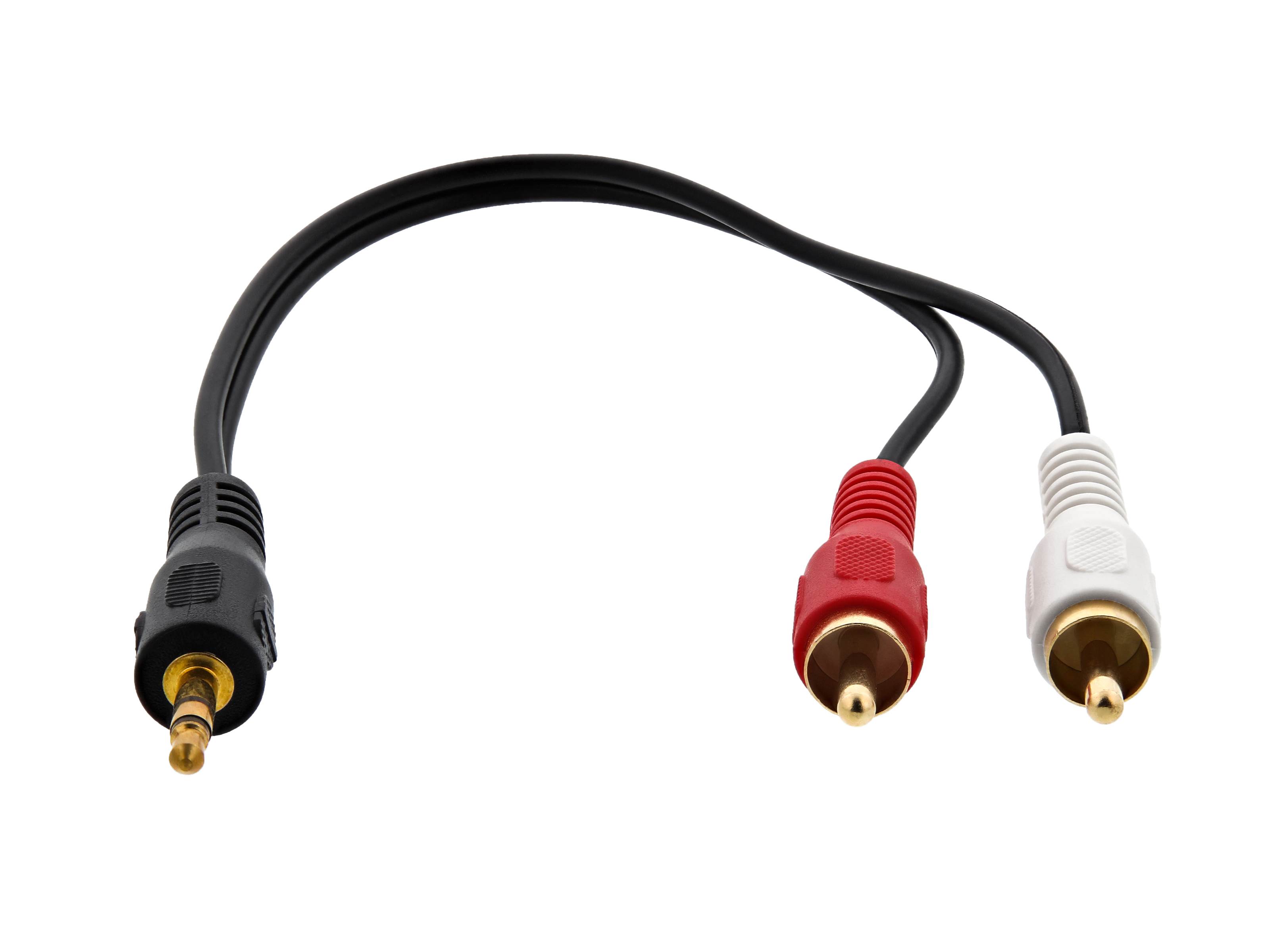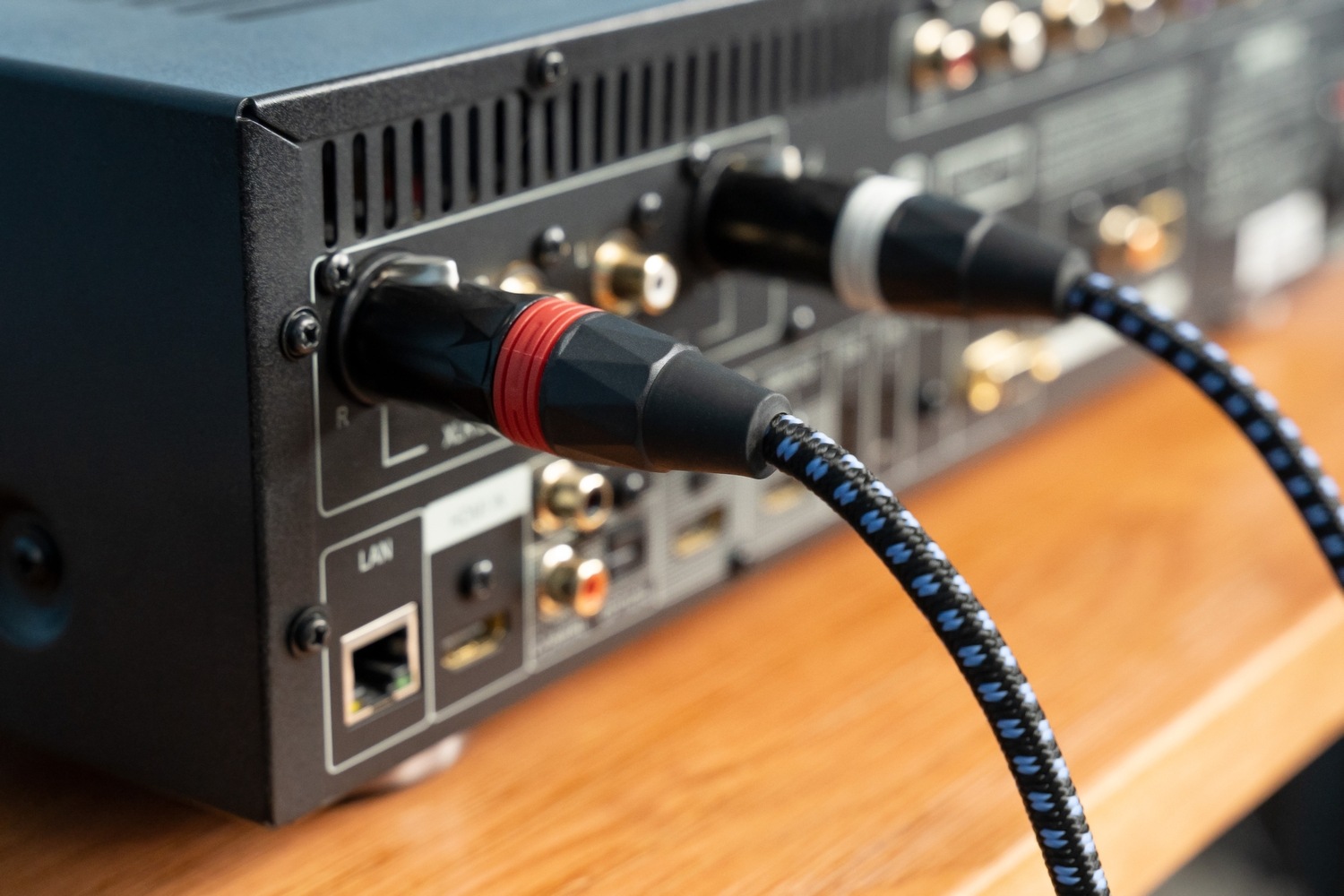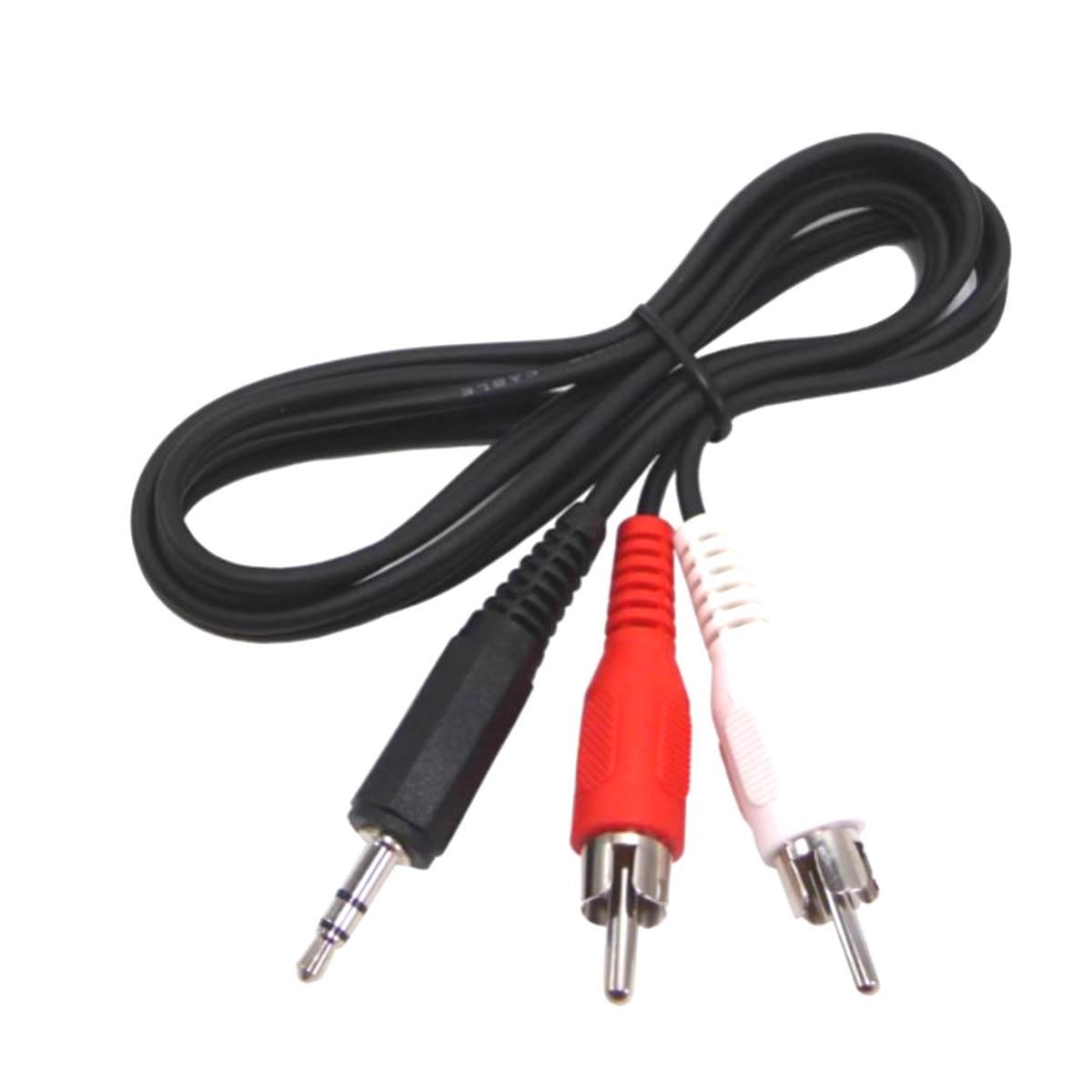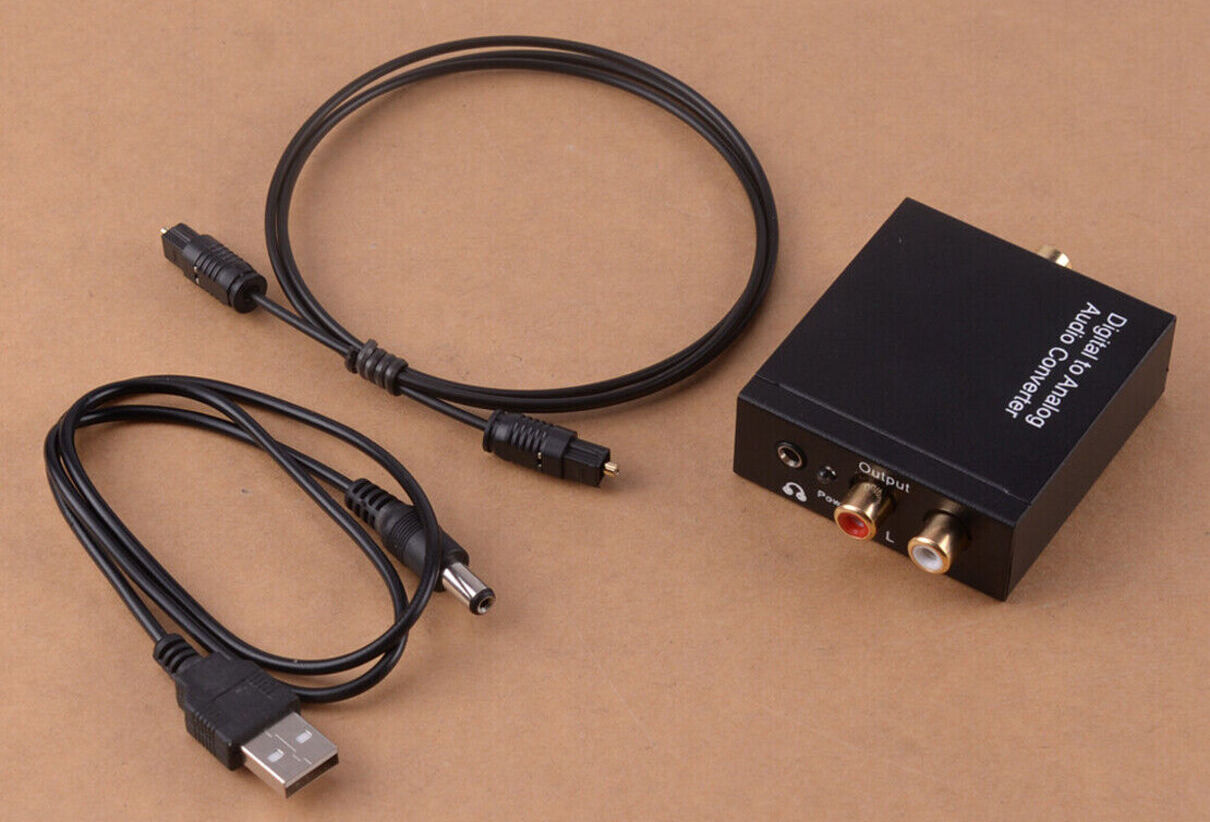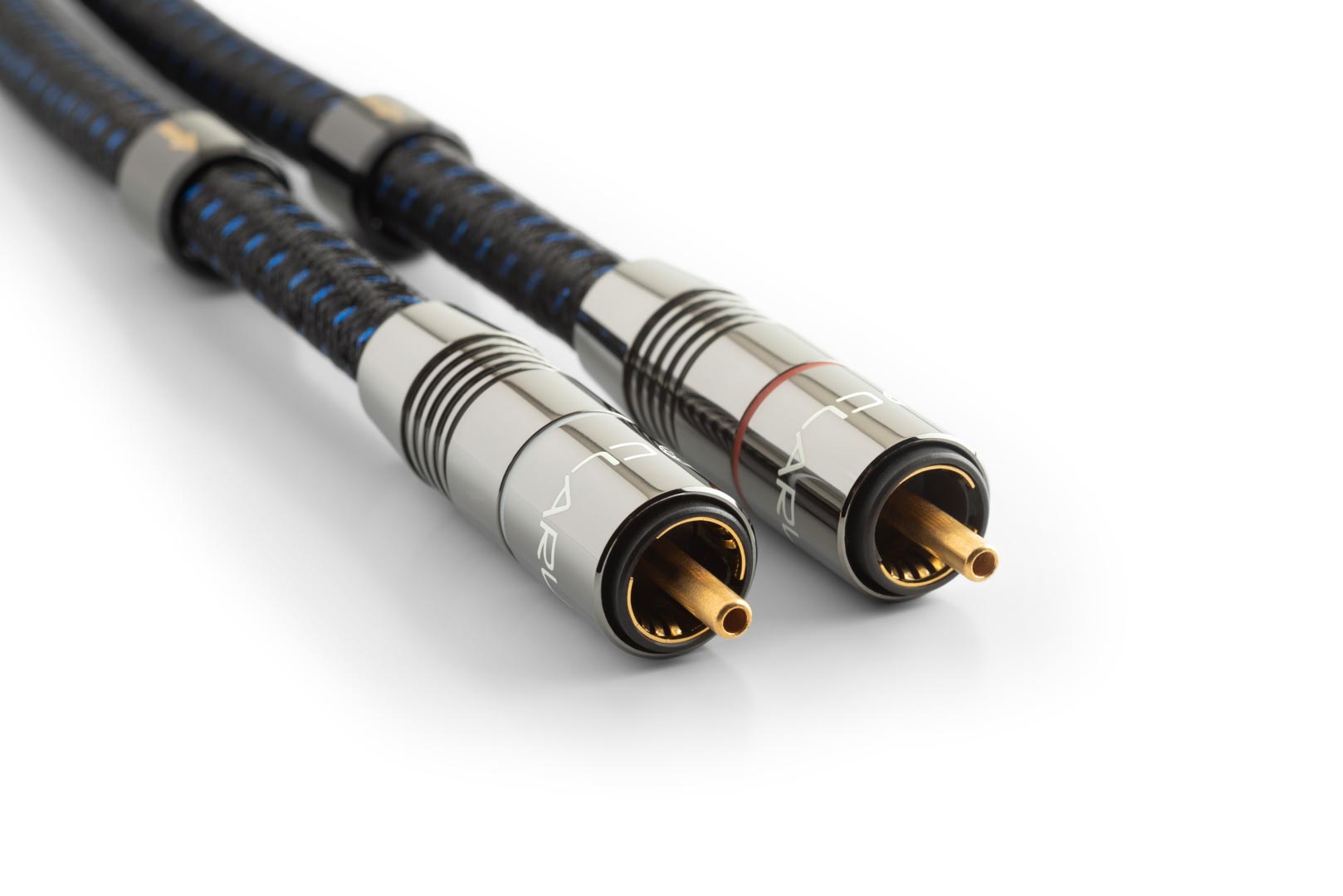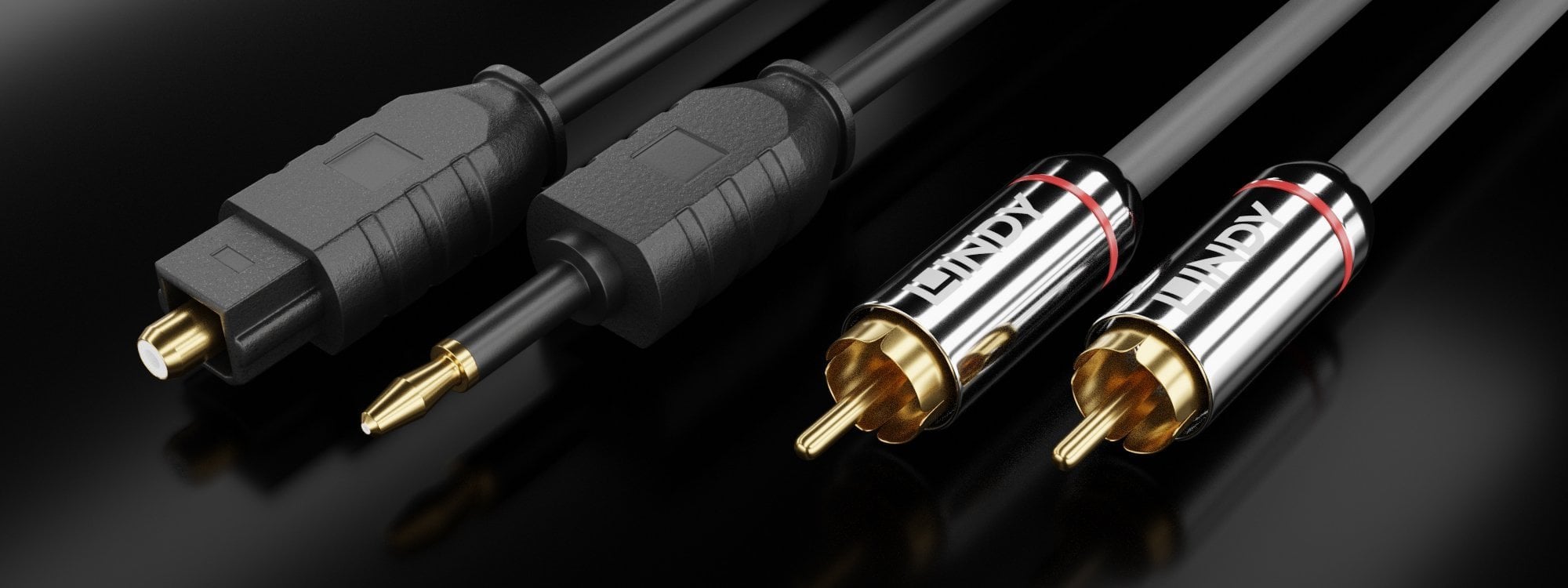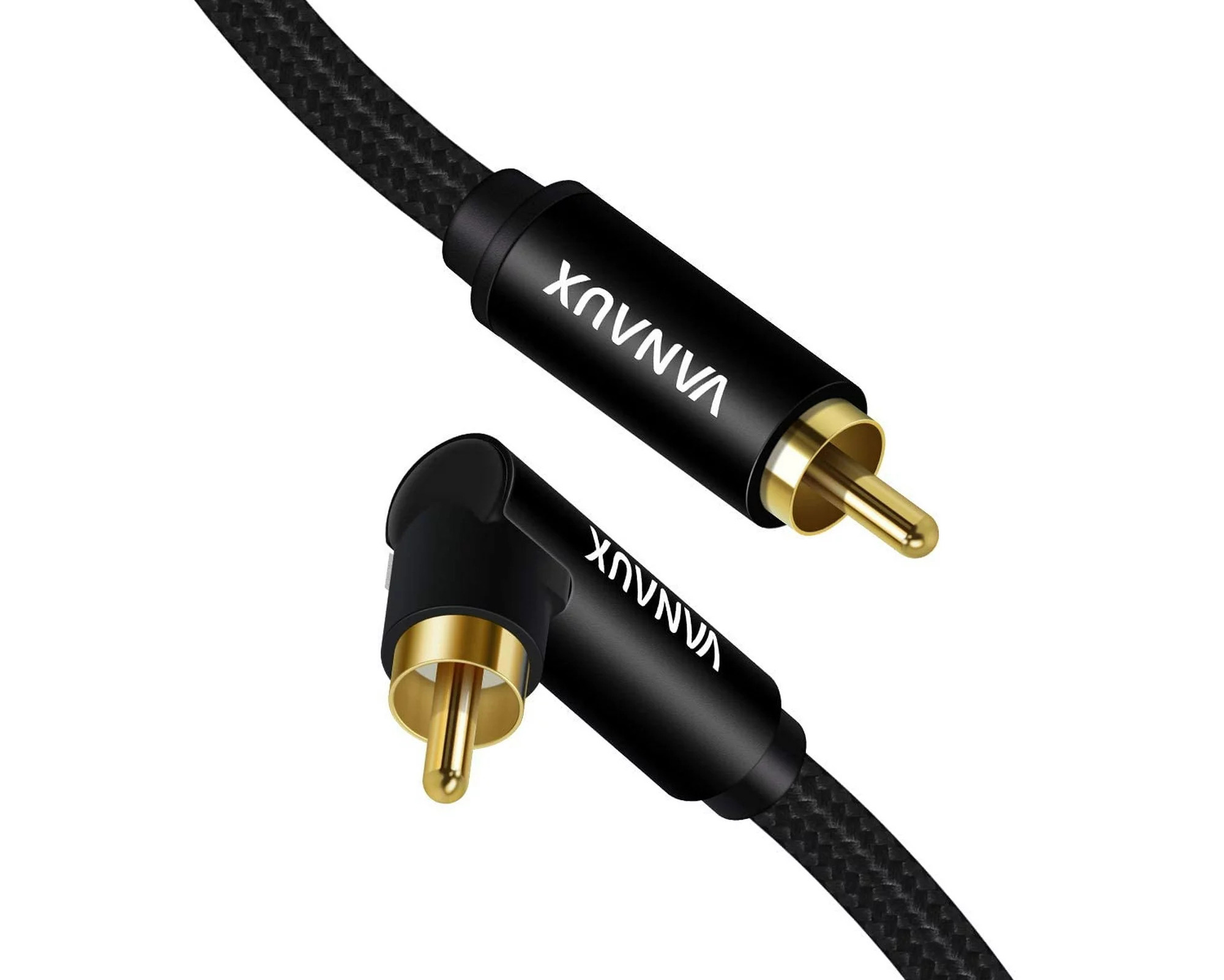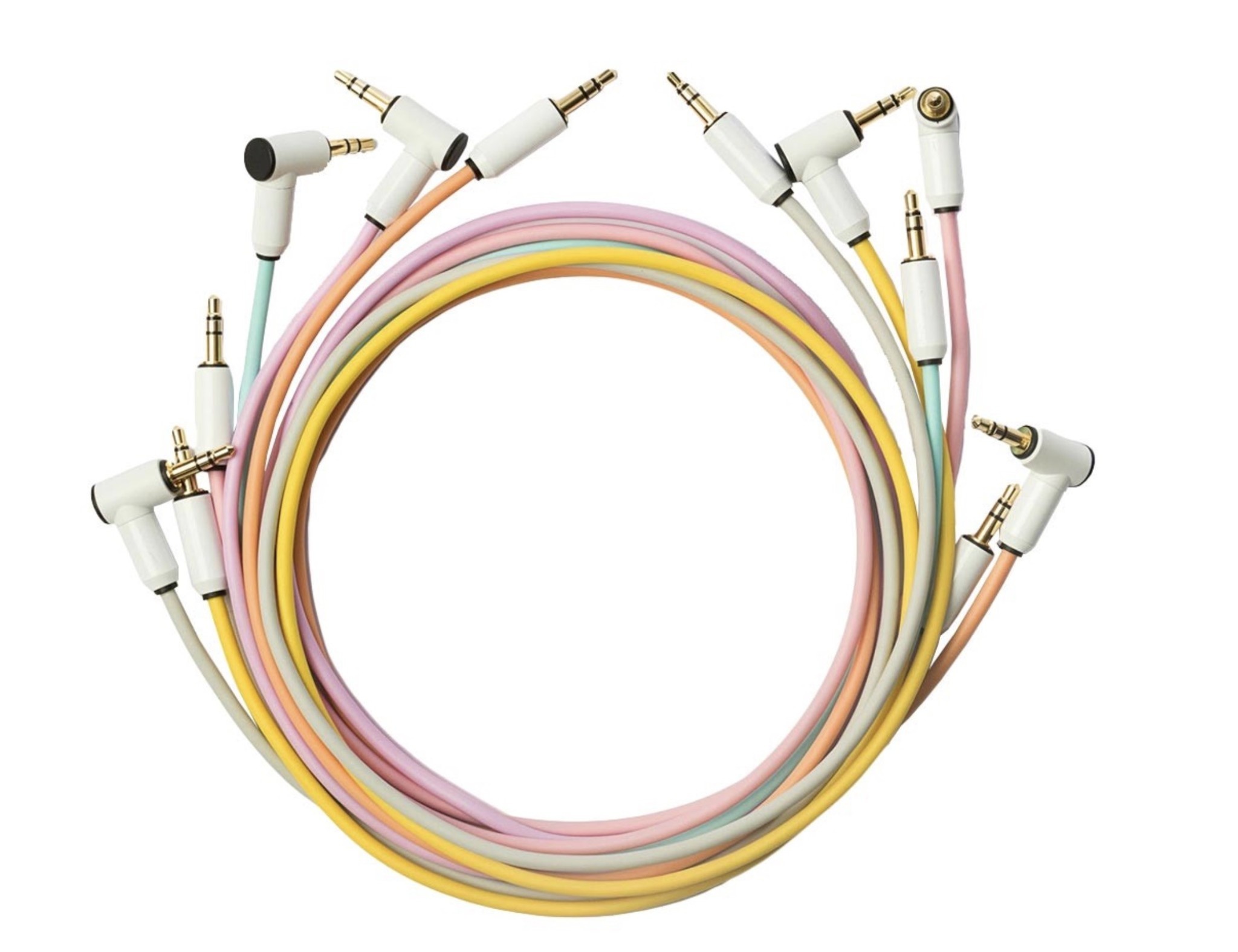Home>Production & Technology>Audio Cable>What Is An Auxiliary Audio Cable
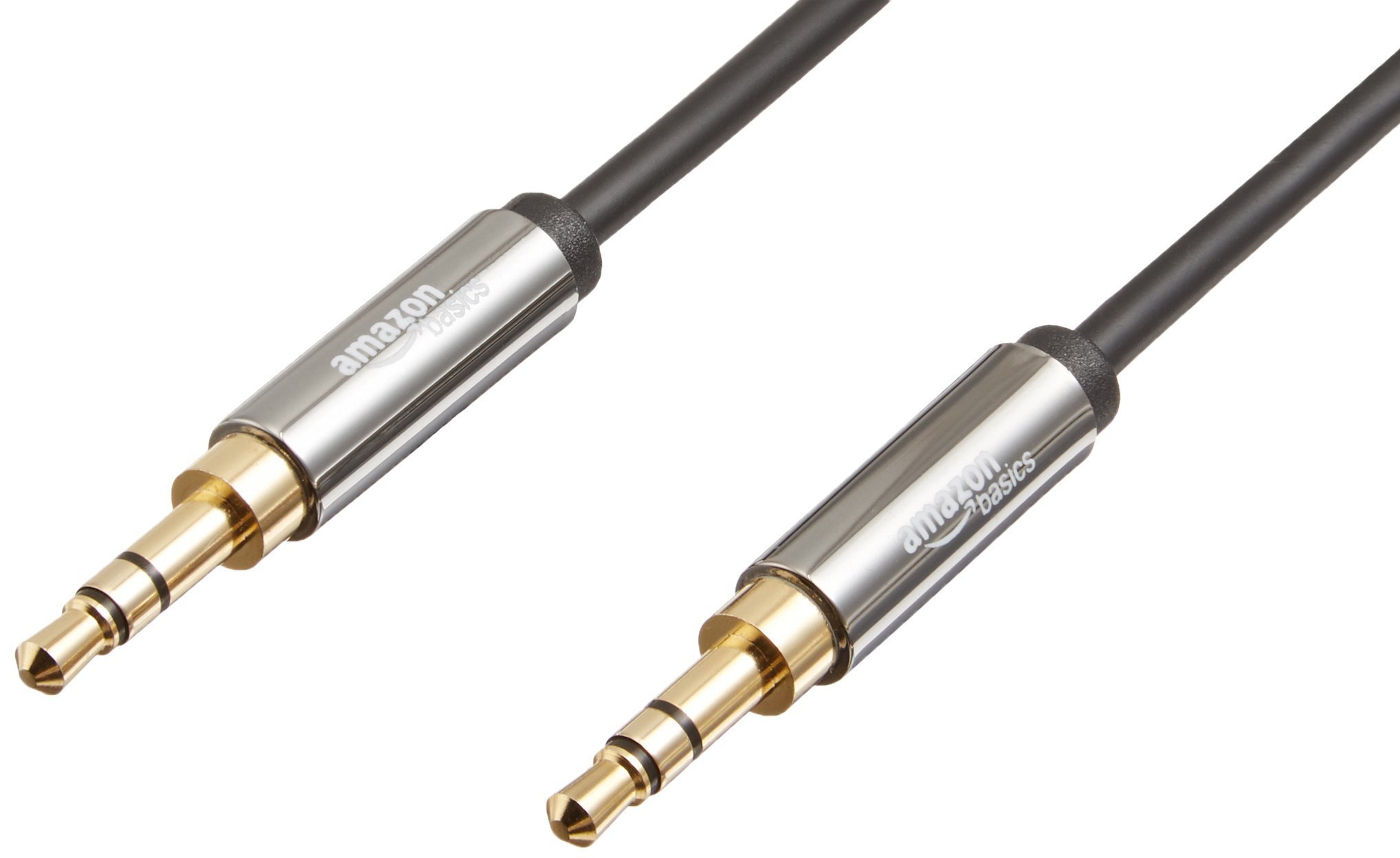

Audio Cable
What Is An Auxiliary Audio Cable
Modified: January 22, 2024
Discover what an auxiliary audio cable is and how it enhances your audio experience. Explore the benefits of using this versatile audio cable for connecting devices.
(Many of the links in this article redirect to a specific reviewed product. Your purchase of these products through affiliate links helps to generate commission for AudioLover.com, at no extra cost. Learn more)
Table of Contents
Introduction
Welcome to the world of audio cables! In this modern age of technology, almost everything seems to be connected wirelessly. However, there are still instances where wired connections provide superior audio quality and reliability. One such wired connection that has stood the test of time is the auxiliary audio cable.
An auxiliary audio cable, commonly referred to as an AUX cable, is a versatile and essential accessory for connecting audio devices. Whether you want to listen to your favorite tunes on your car stereo, connect your smartphone to a speaker, or plug your headphones into a laptop, an AUX cable is the conduit that allows you to bridge the gap between devices.
With its simple yet effective design, the auxiliary audio cable has become a staple in every audiophile’s arsenal. From casual music enthusiasts to professional sound engineers, the AUX cable has earned its place as a reliable and convenient audio connectivity solution.
In this article, we will explore the ins and outs of the auxiliary audio cable, including its definition, uses, types, usage tips, factors to consider when buying one, and common issues with troubleshooting tips. By the end, you will have a comprehensive understanding of this underrated audio accessory and be well-equipped to make the most out of your audio connections.
Definition of an Auxiliary Audio Cable
An auxiliary audio cable, often referred to simply as an AUX cable, is a cable with standard 3.5mm connectors on both ends. These connectors, also known as TRS (Tip, Ring, Sleeve), are commonly found in audio equipment such as smartphones, tablets, laptops, music players, speakers, car stereos, and headphones. The AUX cable acts as a bridge between these devices, allowing audio signals to be transmitted from one device to another.
The main purpose of an auxiliary audio cable is to facilitate the connection between audio devices that lack wireless capabilities or when a wired connection is preferred due to better audio quality or stability. This makes it an invaluable tool for audio enthusiasts, DJs, and anyone who values high-quality audio reproduction.
The standard 3.5mm connectors on each end of the AUX cable are designed to fit into the corresponding audio jacks found on most devices. The male connector, often referred to as the “plug,” features a protruding tip and a metal sleeve surrounding it. The female connector, commonly known as the “jack,” has a hollow receptacle and metal rings that match with the plug connectors.
One unique feature of the auxiliary audio cable is its universal compatibility. Thanks to its standardized connectors, the AUX cable can be used with a wide range of audio equipment, regardless of brand or model. This versatility makes it a go-to choice for connecting various devices, including smartphones, portable music players, home theater systems, car audio systems, and more.
The length of an AUX cable can vary, but the most common lengths range from 1 to 10 feet. Shorter cables are ideal for close-range connections, such as connecting a smartphone to a speaker, while longer cables offer flexibility when connecting devices that are further apart.
Now that we understand the basic definition of an auxiliary audio cable, let’s explore its uses and functions in more detail.
Uses and Functions of an Auxiliary Audio Cable
The auxiliary audio cable has a wide range of uses and functions, making it a versatile accessory for audio enthusiasts and everyday users alike. Let’s explore some of the primary uses and functions of an auxiliary audio cable:
- Audio Playback: One of the most common uses of an auxiliary audio cable is for audio playback. You can connect your smartphone, MP3 player, or laptop to speakers, headphones, or car stereos to enjoy your favorite music, podcasts, or audiobooks with enhanced sound quality.
- Hands-Free Calling: Many car stereos and speakers come equipped with built-in microphones that allow you to make and receive hands-free phone calls. By connecting your smartphone to the audio system using an auxiliary audio cable, you can take advantage of this feature and have clear, hands-free conversations.
- Recording and Mixing: For audio professionals, an auxiliary audio cable is an essential tool for recording and mixing purposes. It allows you to connect instruments, microphones, and other audio equipment to audio interfaces or mixers, enabling you to capture and process high-quality audio signals.
- Gaming: Gamers can also benefit from using an auxiliary audio cable. By connecting their gaming consoles, computers, or portable devices to gaming headsets or speakers, gamers can immerse themselves in the game’s audio effects and communicate with other players for a more engaging gaming experience.
- Car Audio Connection: Auxiliary audio cables are commonly used in cars to connect portable devices to the car’s stereo system. This allows you to play music from your smartphone or portable music player directly through the car speakers, providing a convenient and enjoyable in-car entertainment experience.
These are just a few examples of the many uses and functions of an auxiliary audio cable. Its versatility and compatibility make it an essential accessory for anyone who wants to enjoy high-quality audio connections across various devices.
Next, let’s delve into the different types of auxiliary audio cables available in the market.
Types of Auxiliary Audio Cables
When it comes to auxiliary audio cables, there are several types available in the market. These variations cater to different devices, audio needs, and preferences. Let’s explore some of the common types:
- Stereo Auxiliary Audio Cable: This is the most common type of auxiliary audio cable, designed to transmit stereo audio signals. It features a 3.5mm connector on both ends, enabling the connection between devices such as smartphones, tablets, laptops, and speakers. The stereo auxiliary audio cable is ideal for music playback and general audio connections.
- TRS to TRS Cable: This cable, featuring Tip, Ring, Sleeve connectors on both ends, is commonly used in professional audio equipment. It is suitable for connecting instruments, microphones, audio interfaces, and mixers. The TRS to TRS cable allows for balanced audio transmission, minimizing noise and providing superior audio quality.
- TRS to XLR Cable: This auxiliary audio cable is used to connect devices with TRS connectors, like audio interfaces or mixers, to devices with XLR connectors, often found in professional microphones or speakers. The TRS to XLR cable converts the signal from unbalanced to balanced, ensuring optimal audio quality and compatibility.
- Optical Auxiliary Audio Cable: Also known as a TOSLINK cable, this type of auxiliary audio cable uses fiber optic technology to transmit audio signals. It is commonly used to connect devices like TVs, soundbars, and home theater systems, providing high-fidelity digital audio transmission without any electromagnetic interference.
- Coiled Auxiliary Audio Cable: This type of cable features a coiled design, allowing for easier cable management and minimizing tangles. Coiled auxiliary audio cables are often used in professional settings or in-car audio setups, where a neat and organized cable layout is desired.
These are just a few examples of the types of auxiliary audio cables available. It’s important to choose the right type depending on your specific audio setup and equipment.
Now that we’ve covered the different types of auxiliary audio cables, let’s move on to the next section to learn how to use an auxiliary audio cable effectively.
How to Use an Auxiliary Audio Cable
Using an auxiliary audio cable is a simple and straightforward process. Follow these steps to ensure a proper connection:
- Identify the audio devices: Determine which devices you want to connect using the auxiliary audio cable. This can include smartphones, music players, laptops, speakers, headphones, or car stereos.
- Locate the audio jack: Locate the audio jack on each device. The audio jack is usually a 3.5mm port labeled “Audio Out,” “Line Out,” or with a headphone symbol.
- Plug in one end of the cable: Take one end of the auxiliary audio cable and insert the 3.5mm connector into the audio jack of the first device. Ensure a secure connection by pushing it in firmly but gently. The male connector should be completely inserted into the audio jack.
- Connect the other end: Take the other end of the cable and plug it into the audio jack of the second device. Again, ensure a secure connection by firmly inserting the connector.
- Auxiliary audio settings: Depending on the devices, you might need to adjust the audio settings to ensure the sound is routed correctly through the auxiliary connection. For example, on a smartphone, you may need to select “Audio Output” or “Headphones” as the audio source.
- Start the audio source: Play the audio on the source device, whether it’s playing music, a video, or any other audio content.
- Adjust volume: Use the volume controls on the audio source device or the connected speakers/headphones to adjust the volume to your desired level.
That’s it! You have successfully connected your devices using an auxiliary audio cable. Enjoy the enhanced audio experience!
It’s worth noting that some devices may have multiple audio jacks, such as separate jacks for headphones and microphones. In such cases, ensure that you are connecting the auxiliary audio cable to the appropriate audio jack.
Now that you know how to use an auxiliary audio cable, let’s explore the factors to consider when buying one.
Factors to Consider When Buying an Auxiliary Audio Cable
When it comes to purchasing an auxiliary audio cable, there are several factors to consider to ensure you choose the right one for your specific needs. Here are some key factors to keep in mind:
- Cable Length: Determine the length of the cable you need based on the distance between the devices you want to connect. Shorter cables, around 3 to 6 feet, are ideal for in-car or close-range connections, while longer cables, ranging from 10 to 25 feet or more, are suitable for connecting devices that are further apart.
- Connector Type: Consider the connector type required by your devices. The most common connector is the standard 3.5mm stereo jack. However, some devices may require specialized connectors like TRS, XLR, or TOSLINK. Ensure the cable you choose has the appropriate connectors for your devices.
- Audio Quality: If you prioritize high-quality audio, opt for a cable that ensures optimal signal transmission with minimal interference. Look for cables with gold-plated connectors and OFC (oxygen-free copper) conductors, as they offer improved conductivity and durability.
- Durability: Consider the build quality and durability of the cable. Look for cables with robust construction, reinforced connectors, and sturdy insulation to withstand frequent use and minimize the risk of damage or signal loss over time.
- Compatibility: Ensure that the auxiliary audio cable is compatible with your devices and audio equipment. Verify the compatibility of the connectors, the overall length and design of the cable, and any specific requirements of your devices.
- Budget: Consider your budget when purchasing an auxiliary audio cable. While it’s essential to invest in a quality cable for better audio performance and durability, there are options available in various price ranges to suit different budgets.
By considering these factors, you can make an informed decision and choose an auxiliary audio cable that meets your specific requirements and ensures a seamless and reliable audio connection.
Now, let’s address some common issues that may arise when using an auxiliary audio cable and provide troubleshooting tips to overcome them.
Common Issues and Troubleshooting Tips for Auxiliary Audio Cables
While auxiliary audio cables are generally reliable, there are a few common issues that you may encounter during their use. Here are some of those issues and troubleshooting tips to help you resolve them:
- Poor or No Audio: If you’re experiencing low or no sound, first ensure that both ends of the cable are securely connected to the devices. Sometimes, a loose connection can cause audio issues. Additionally, check the volume levels on both the source device and the receiving device to ensure they are at an audible level.
- Static or Interference: If you hear static or interference during audio playback, it could be due to a poor connection or external factors such as electromagnetic interference. Try cleaning the connectors using a soft cloth and reinserting them firmly into the audio jacks. If the issue persists, try using a different auxiliary audio cable or relocate your devices to minimize environmental interference.
- One-Sided Audio: If you are only getting audio from one side (left or right channel), it could mean that the cable is not plugged in correctly or there is an issue with the headphone/speaker jack of the device. Try unplugging the cable and plugging it back in, ensuring a secure connection. If the problem persists, test the cable with different devices to determine if it’s a cable or device issue.
- Cable Fraying or Damage: Over time, cables can become frayed or damaged, affecting audio quality or causing intermittent connectivity issues. If you notice any visible damage, it’s recommended to replace the cable with a new one to ensure consistent and reliable audio transmission.
- Compatibility Issues: In some cases, certain devices may not be compatible with certain auxiliary audio cables due to different standards or proprietary connectors. Ensure that you are using the correct cable and connectors that are compatible with your devices. If needed, consult the device manufacturers’ guidelines or contact customer support for further assistance.
These are some of the common issues you might encounter when using an auxiliary audio cable and the suggested troubleshooting steps to help you resolve them. By following these tips, you can ensure a smooth and uninterrupted audio experience with your auxiliary audio cable.
Now, let’s wrap up our discussion on auxiliary audio cables.
Conclusion
An auxiliary audio cable, or AUX cable, is a versatile and indispensable accessory for audio enthusiasts and everyday users alike. Whether you want to listen to music in your car, connect your smartphone to a speaker, or record and mix audio professionally, an auxiliary audio cable bridges the gap between devices, ensuring seamless audio transmission.
In this article, we’ve covered the definition of an auxiliary audio cable, its uses, types, usage tips, factors to consider when buying one, and common issues with troubleshooting tips. By understanding these aspects, you can make informed decisions when it comes to choosing the right auxiliary audio cable and overcome any issues that may arise in its usage.
When buying an auxiliary audio cable, consider factors such as cable length, connector type, audio quality, durability, compatibility, and budget. By carefully evaluating these factors, you can choose a cable that meets your specific needs and delivers optimal audio performance.
While auxiliary audio cables are generally reliable, occasional issues like poor audio, static or interference, one-sided audio, or cable fraying may occur. By following the troubleshooting tips provided, you can resolve these issues and ensure a seamless audio experience.
Whether it’s for music playback, hands-free calling, recording and mixing, gaming, or connecting audio in your car, an auxiliary audio cable remains a vital tool for audio enthusiasts and professionals. Its universal compatibility and simplicity make it an indispensable accessory in the world of audio connections.
So next time you want to connect your devices and enjoy high-quality audio, remember the power of the auxiliary audio cable. With its ability to bridge the gap between devices, it brings music and audio to life in a simple, reliable, and convenient way.

